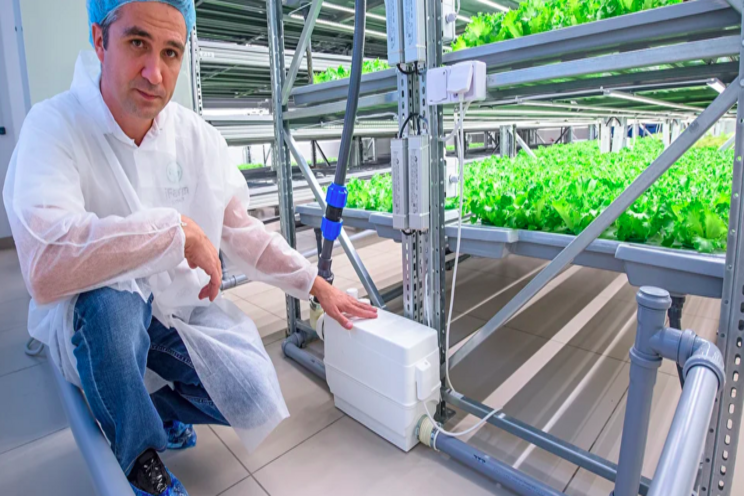How much electricity does a vertical farm use?
Added on 22 December 2020


Want to know more? Here, we give you the lowdown on what you'll need to get started, how to reduce your running costs and how to boost your green credentials.
Creating a Vertical Farm with iFarm
A vertical farm can be created in virtually any indoor environment. From warehouses to stockrooms and even residential garages, it's possible to create the perfect conditions for plant growth.

Once you've decided where your vertical farm is going to be situated, you'll need to prepare the building. Installing high-quality thermal insulation helps to maintain a constant temperature, which ensures optimal growth, minimises energy usage and reduces operating costs.
Our Chief Engineer, Pavel Zeeman advises, "The temperature on a vertical farm should be around 20°C. When this temperature is maintained structurally, you only need to make minimal adjustments using equipment, such as an automated climate system. This means you'll use less energy, become more sustainable and incur fewer costs".

With so many benefits associated with vertical farming, it's easy to see why people are eager to embrace this innovative method of food production. However, people tend to assume that the running costs associated with vertical farming render it unprofitable. In particular, the requisite electricity usage can be a barrier for budding vertical farmers. Fortunately, our groundbreaking technology makes it easy to minimise electricity consumption and reduce your operating costs.
What Equipment Do You Need?
Before we can assess how much electricity your vertical farm will use, it's important to identify what type of equipment you'll need. The volume of equipment required will depend on the size of your operations but every vertical farm needs:
ˇ LED lamps to illuminate the farm. As vertical farms are situated indoors, you don't need to rely on sunlight for plant growth. Instead, specialist LED lamps, developed by our engineers, shine white light, including red, blue, yellow and green spectra, to create optimal growing conditions.
ˇ Air conditioning system to circulate and cool the air.
ˇ Osmotic system to purify water.
ˇ Fertigation unit, developed by iFarm engineers, to prepare a nutrient-rich solution for plants.
ˇ Pumps to deliver fertilisers to plants.
ˇ Air humidifiers are required during the first few months of operation. Once plants are mature, they're able to maintain appropriate humidity levels naturally and air humidifiers are no longer needed.
ˇ Air dryers are used on larger farms where mature plants process more water. They maintain the humidity level and are a great way to save water.
ˇ Controllers and automation systems maintain a stable microclimate, control mixing solutions and facilitate plant growth with minimal human input.
ˇ Lamps are used to illuminate the farm and to navigate your workspace.
ˇ A computer and modem are used to log into our Growtune IT system and manage your farm remotely.
ˇ Webcams allow you to monitor plants easily, transmit photos to Growtune and detect growth deviations or diseases using computer vision technology.
Once you've got everything setup, you'll find that LED lamps (65%), air conditioners (20%) and dehumidifiers (10%) account for 95% of electricity usage, while the remaining devices use less than 5%.
Now you know exactly what electrical equipment you'll be using, we'll show you just how much electricity it will take to grow your crops.

How Much Electricity Will You Use?
The amount of electricity your vertical farm uses will depend on exactly which crops you choose to grow. We've calculated how much electricity it takes to grow light-loving Romaine lettuce, shade-loving rocket and garden strawberries to give you an example of energy usage on vertical farms.
Click here to check the following data that shows just how much electricity you'll use in a 1000 m˛ planting area when you use iFarm technologies.
Source and Photo Courtesy of iFarm
Source: iFarm
More news















